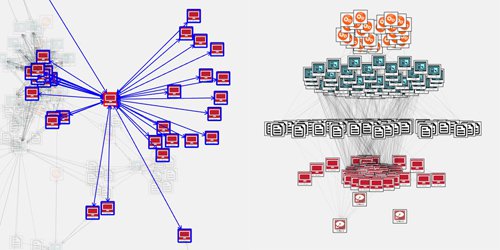
Graphical representations of network topology.
The spectre of cyber attacks on aerospace systems can no longer be ignored, given that many of the components and vulnerabilities that have been successfully exploited by the adversary on other infrastructures are the same as those deployed and used within the aerospace environment. An important consideration with respect to the mission/safety critical infrastructure supporting space operations is that an appropriate defensive response to an attack has the goal to preserve critical mission objectives in the presence of adversarial activity which invariably involves the need for high precision and accuracy, because an incorrect response can trigger unacceptable losses involving lives and/or significant financial damage. A highly precise defensive response, considering the typical complexity of aerospace environments, requires a detailed and well-founded understanding of the underlying system. To capture this detailed and rigorous understanding, a structured approach for modeling aerospace systems has been developed. The approach includes physical elements, network topology, software applications, system functions, and usage scenarios. We leverage Model-Based Systems Engineering methodology by utilizing the Object Management Group’s Systems Modeling Language to represent the system being analyzed and also utilize model transformations to provide relevant aspects of the model to specialized analyses. A novel visualization approach is utilized to visualize the entire model as a three-dimensional graph, allowing easier interaction with subject matter experts. The model provides a unifying structure for analyzing the impact of a particular attack or a particular type of attack. A graph-based propagation analysis based on edge and node labels is used to analyze the model.


